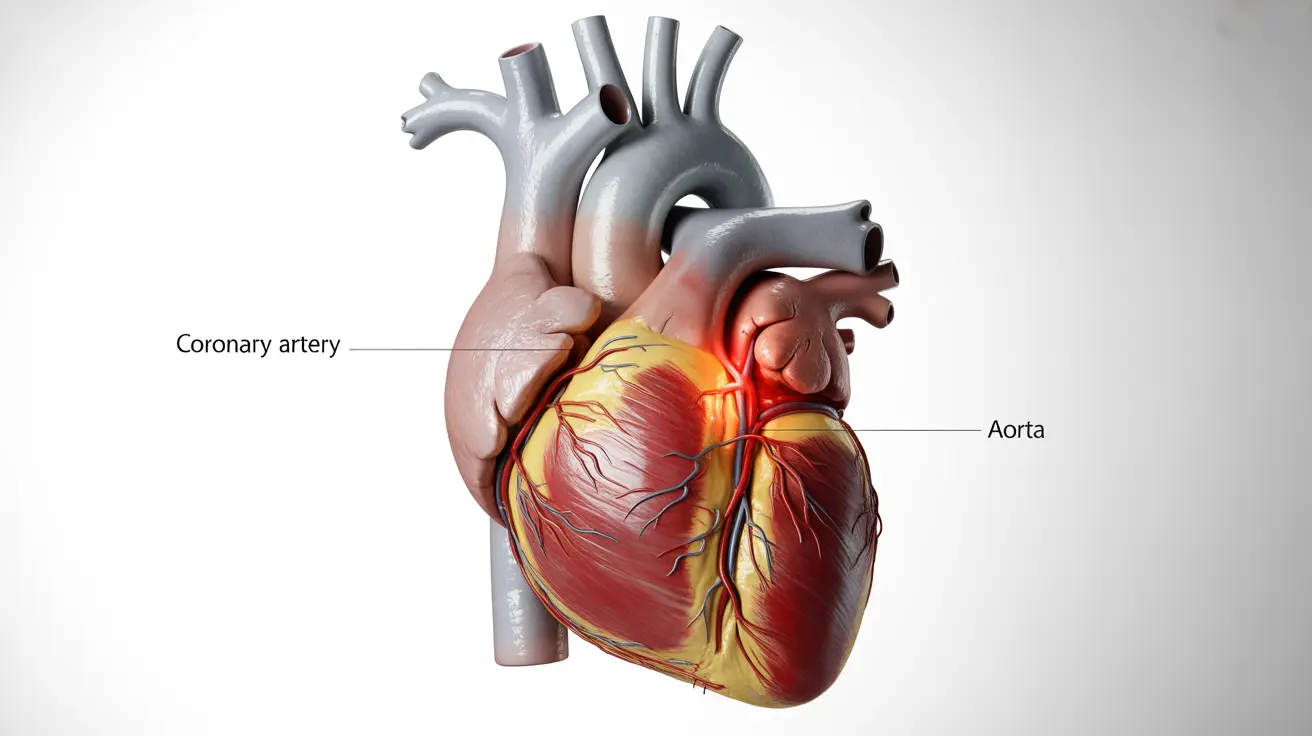Unstable angina is a serious cardiac condition that requires immediate medical attention. It occurs when the heart muscle doesn't receive enough oxygen-rich blood, typically due to narrowed or blocked coronary arteries. Unlike stable angina, which follows a predictable pattern, unstable angina symptoms can occur unexpectedly and may signal an impending heart attack.
Recognizing the symptoms of unstable angina and understanding when to seek emergency care can be life-saving. This comprehensive guide will help you identify warning signs, understand treatment options, and learn about prevention strategies.
Key Symptoms of Unstable Angina
The symptoms of unstable angina often differ from stable angina in several important ways:
- Chest pain or discomfort that occurs without physical exertion
- Pain that is more severe or lasts longer than usual angina episodes
- Discomfort that doesn't improve with rest or nitroglycerin
- Symptoms that may include sweating, shortness of breath, and nausea
Unlike stable angina, these symptoms can occur at any time and may progressively worsen, requiring immediate medical evaluation.
Understanding the Diagnosis Process
Healthcare providers use several methods to diagnose unstable angina:
- Physical examination and medical history review
- Blood tests to check for cardiac enzymes
- Electrocardiogram (ECG) monitoring
- Stress tests when appropriate
- Cardiac catheterization to examine coronary arteries
Treatment Approaches
Immediate Medical Interventions
Treatment for unstable angina typically begins with immediate medical care to prevent heart attack:
- Antiplatelet medications
- Blood thinners
- Nitroglycerin for symptom relief
- Beta-blockers to reduce heart workload
- Pain management when necessary
Long-term Management Strategies
Long-term treatment may involve:
- Medications to control blood pressure and cholesterol
- Regular medical monitoring
- Cardiac rehabilitation programs
- Lifestyle modifications
- Possible surgical interventions when necessary
Risk Factors and Prevention
Understanding your risk factors is crucial for prevention:
- High blood pressure
- Smoking
- High cholesterol
- Diabetes
- Family history of heart disease
- Obesity
- Sedentary lifestyle
Lifestyle Changes for Management
Several lifestyle modifications can help manage unstable angina:
- Adopting a heart-healthy diet
- Regular physical activity (as approved by your healthcare provider)
- Stress management techniques
- Smoking cessation
- Weight management
- Blood pressure monitoring
When to Seek Emergency Care
Certain symptoms warrant immediate medical attention:
- Chest pain lasting more than a few minutes
- Pain spreading to arms, neck, or jaw
- Severe shortness of breath
- Excessive sweating with chest discomfort
- Nausea or vomiting with chest pain
Frequently Asked Questions
What are the main symptoms of unstable angina and how do they differ from a heart attack? Unstable angina symptoms include unexpected chest pain, discomfort at rest, and pain that doesn't respond to nitroglycerin. While similar to heart attack symptoms, unstable angina typically doesn't cause permanent heart damage, though it may precede a heart attack.
How is unstable angina typically treated, and what are the roles of medications versus surgery? Treatment typically involves immediate medications like blood thinners and nitroglycerin, followed by long-term medications to manage risk factors. Surgery may be necessary if medications aren't effective, typically involving procedures like angioplasty or bypass surgery.
Can unstable angina be prevented or managed through lifestyle changes such as diet or exercise? Yes, lifestyle changes play a crucial role in prevention and management. This includes maintaining a heart-healthy diet, regular exercise as approved by your doctor, stress management, and smoking cessation.
What are the risk factors that increase a person's likelihood of developing unstable angina? Key risk factors include high blood pressure, smoking, high cholesterol, diabetes, obesity, family history of heart disease, and a sedentary lifestyle.
What are the potential complications of untreated unstable angina, and how urgent is medical attention if symptoms occur? Untreated unstable angina can lead to heart attack, severe heart damage, or even death. Medical attention should be sought immediately when symptoms occur, as this condition is considered a medical emergency.




